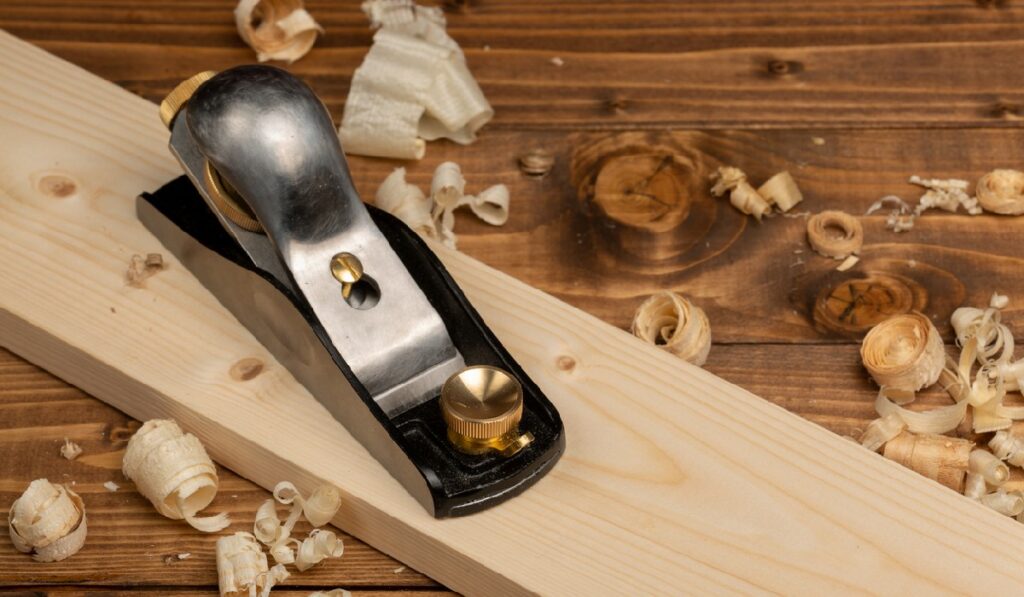The Best Ways To Use a Block Plane

If you’re a woodworker or DIY enthusiast, chances are you’ve heard of a block plane. These small, handheld tools are great for making fine adjustments to your woodworking projects. There’s more to them than just adjusting wood, and block planes are versatile tools that can do many tasks.
A block plane is primarily used to shave off small amounts of wood from finished surfaces. This tool works across the grain as well as with the grain. Because it is lightweight, you can use it with one hand, so it’s great for maneuvering in tight spaces and corners.
In this blog post, we’ll cover the basics of block planes, the best uses, and the types of block planes available. Whether you’re a hobbyist or a professional woodworker, you’ll walk away with knowledge and insight on how to get the most out of your block plane investment. So, grab your block plane, and let’s get started.
Types of Planes
There are many different types of block planes designed for various purposes. The type you use will depend on the application you have in mind. Block planes with adjustable mouths, soles, and blades are ideal for all kinds of tasks, including trimming end grain or cutting rabbets. Block planes with fixed blades are better suited for cleaning flat surfaces or trimming tongues without creating sharp edges.
Components of a Block Plane
The cutter is the main component of a block plane, and it consists of a flat iron surface with a cutting edge. In some cases, the cutter has two edges, depending on the block plane model you use.
The adjustment mechanisms allow you to change the depth of the cut and control the pressure on the most delicate material with precision. They usually consist of a screw that allows you to adjust the opening between the underside of the blade and the sole of the plane. Another screw permits fine-tuning of the angle at which the blade enters the wood. The base is what makes contact with the wood surface and is available in various sizes depending on your project needs.
Benefits of Using a Block Plane
Using a block plane for smoothing edges can yield excellent results when done correctly. You can create smooth, curved edges by properly adjusting the blade angle and depth settings so it effectively shaves off small amounts of material.
Using a block plane to flatten boards can also be very effective. When making adjustments, it is crucial to ensure all parts are tightened while allowing enough play for easy maneuvers. Be sure not to set your adjustments too tightly, as this can cause damage to your plane’s parts and your workpiece.
Block planes are especially useful for trimming joints, including those found in dovetails or box joints. By properly setting up your blade settings and controlling cutting pressure, you will be able to easily create high-quality results without leaving behind excessive tear-out marks or splinters in your material.
Tips for Safe and Effective Use
Before using your block plane, ensure the cutter is sharpened properly, so it can effectively slice through whatever material you’re working with. Sharpening will help ensure safe operation. To sharpen your blade, start by removing any burrs left over from previous projects, then sand down any nicks or imperfections on its surface. Apply a honing oil before running each side against sharpening stones until they are uniform in shape.
After sharpening your cutter, you will want to adjust its angle to suit whatever type of woodworking application you’re using it for. Adjust both screws on either side of its blade until they are snug.
To avoid unnecessarily long slivers from forming during use, be sure to place additional support underneath your workpiece whenever possible by using clamps. These clamps will help keep everything steady. Always check for accuracy first before proceeding with each pass.
Conclusion
A block plane can be a valuable tool for any woodworker or DIY enthusiast. Whether you’re looking to trim joints, smooth edges, flatten boards, or just want to refine your carpentry skills, a block plane is a great tool to have. With the right knowledge and understanding of its features and functions, you’ll be prepared to make your work look professional and have fun doing it. Get out there, grab your block plane, and make something amazing.
